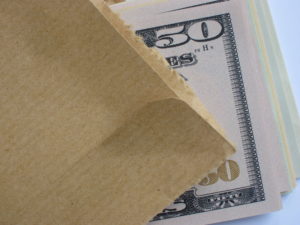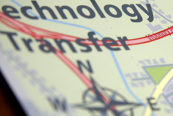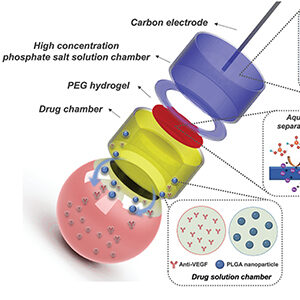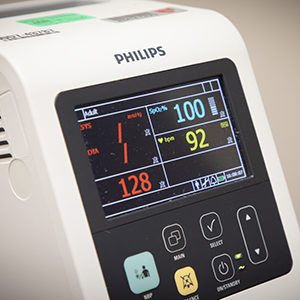by Agnes Lenagh, UNeMed | Feb. 15, 2013
 As a licensing associate at UNeMed, it’s my job to get industry partners interested in UNMC technologies. On any given day, I will be walking across campus to chat with faculty about their research and discuss any inventions or research tools they may have that possess commercial potential.
As a licensing associate at UNeMed, it’s my job to get industry partners interested in UNMC technologies. On any given day, I will be walking across campus to chat with faculty about their research and discuss any inventions or research tools they may have that possess commercial potential.
A typical conversation with a UNMC professor might provide details about an exciting new mouse model they created and is gaining popularity among researchers of a particular disease. I then help license the new mouse model to a pharmaceutical company that develops drugs for that specific disease. A license agreement allows the company to use the mouse model to test the efficacy of new drug candidates.
The best part is professors would not only share their knowledge and resources, but could also earn royalties because of the license.
Researchers get excited about the prospects of a licensing agreement, but their excitement is often tempered by their confusion about royalties. At first their eyes light up when they see the licensing revenue numbers, and smirk as they ask about their portion of the proceeds. Smirks soon twist into frowns as they try their best to grasp royalty distribution concepts.
 Comprehending royalty distribution policies can be difficult unless you have a law degree or experience in the field. Prior to joining UNeMed, I was oblivious to the rules and regulations regarding the handling of technology licensing revenue. Licensing revenue and its subsequent distribution can be particularly complicated in some cases, and most universities have a small army of licensing representatives and committee members to negotiate these deals and distribute the incoming revenue. But complications are normally worth the trouble for the income they help generate. In this article, we’ll take a look at licensing revenue and how it is distributed by the university.
Comprehending royalty distribution policies can be difficult unless you have a law degree or experience in the field. Prior to joining UNeMed, I was oblivious to the rules and regulations regarding the handling of technology licensing revenue. Licensing revenue and its subsequent distribution can be particularly complicated in some cases, and most universities have a small army of licensing representatives and committee members to negotiate these deals and distribute the incoming revenue. But complications are normally worth the trouble for the income they help generate. In this article, we’ll take a look at licensing revenue and how it is distributed by the university.
Types of Licensing Revenue
UNeMed manages the technology portfolio for UNMC and also negotiates contracts and license agreements with industry partners interested in technologies and research tools. Payments made to the inventors represent their share of royalty payments from licensees to UNeMed. The particular royalty distribution to the inventor will depend on the specifications of the license, including the amount of incoming royalties, and how the licensee pays (quarterly, annually, or otherwise), the amount of costs invested in the patenting, and if there are any co-inventors.
First, we need to distinguish between different types of payment under a license agreement:
- Licensing Fee: A one-time payment for the granting of rights to a licensee.
- Milestone: A payment made by a licensee when the licensed technology is advanced to a specified stage of development.
- Percent Royalty: A regular payment typically based on a percentage of net sales. Percentages vary with the stage of the technology. For example, royalty percentages might be about 2-3 percent for a technology at pre-clinical testing; 3-4 percent if in clinical trials; 3-5 percent for antibodies; 5-7 percent for an FDA approved drug, and a drug with market share may earn 8-10 percent.
- Guaranteed Minimum Payment: The minimum amount of royalty payments that the university will receive over a specified time period.
While inventing a commercially valuable technology could make a fortune for the inventors, most inventions do not. It all depends on the innovative nature of the technology; its stage of development; the market potential; and negotiated licensing terms.
Distributing Revenue at UNMC
 Whereas research institutions may have different distribution percentages, each has a policy that dictates the distribution of revenues associated with technology license agreements. UNeMed is also responsible for managing the expenses and revenues associated with UNMC technology agreements.
Whereas research institutions may have different distribution percentages, each has a policy that dictates the distribution of revenues associated with technology license agreements. UNeMed is also responsible for managing the expenses and revenues associated with UNMC technology agreements.
The UNMC Royalty and Equity Distribution Policy (7001) states that:
First, the University is reimbursed for all costs associated with protecting, maintaining, defending and commercializing the technology.
Patents are very expensive at $10,000 to $20,000 just to draft and file. The University makes the upfront investment and takes the risk, and sometimes provides assistance with prototyping or software services.
After costs are recouped, revenue is dispersed as follows:
- Inventors receive 33 percent
- UNeMed receives 15 percent to help cover overhead and operating costs that include things like salary, wages, equipment and other important expenses
- Colleges, departments, units and institutes that contributed to the licensed invention all receive a proportional part of a fund created with 10 percent of the first $2 million of royalties, 20 percent for revue greater than $2 million
- The remainder proceeds then go “to the UNMC Chancellor’s office to enhance the services of the technology development office to support services to faculty in the filing of disclosure, protection of intellectual property and the marketing, licensing and commercialization of technologies. A portion of these funds may be used for grants to develop prototypes and conduct additional research to facilitate commercialization of technologies.”
If there is more than one inventor or technology on the license, a Royalty Sharing Agreement (RSA) is signed by each inventor. The RSA outlines how any net revenue will be distributed. Without an RSA, the revenue is distributed equally.
Proceeds are used on a case-by-case basis to promote innovation and foster education on campus. Funding is available for specific research projects that may develop existing and future intellectual property with commercial potential.
Getting the money
Inventors often ask us how much money will they make and when. Earning money is an attractive motivation for inventing and licensing a technology, but the actual payment amount can’t be predicted. The royalty distribution to the inventor depends not only on the licensing agreement, but also the merits and commercial success of the invention.
 Once UNeMed receives the payment from the licensee, they first cover all costs incurred that are associated with the technology. Next, the inventor’s share is one third of the remaining revenue. The royalty payment check will arrive by mail to the inventor’s house and is subject to taxation as income.
Once UNeMed receives the payment from the licensee, they first cover all costs incurred that are associated with the technology. Next, the inventor’s share is one third of the remaining revenue. The royalty payment check will arrive by mail to the inventor’s house and is subject to taxation as income.
Most inventors don’t become overnight celebrities nor retire on technology licensing royalties, but it is possible that the world will be a better place because of their invention. Royalties are an attractive incentive to promote innovation and it doesn’t hurt to have a few extra dollars to buy that state of the art pipette set for the lab.
Join us next week when we discuss more about Patentable Inventions.
|
About the Author
|
Agnes is currently a Licensing Specialist at UNeMed. She is a scientist by training, a free thinker by design, and a bohemian soul by nature. Agnes is part of a team that promotes innovation to make the world a better place. She is working to ensure that scientific and technological developments are accessible to the world. She is also committed to pursuing the passions that inspire her while taking non-conventional approaches to accomplish a meaningful life. @SilverAntigen Contact Agnes: agnes.lenagh@unmc.edu |












